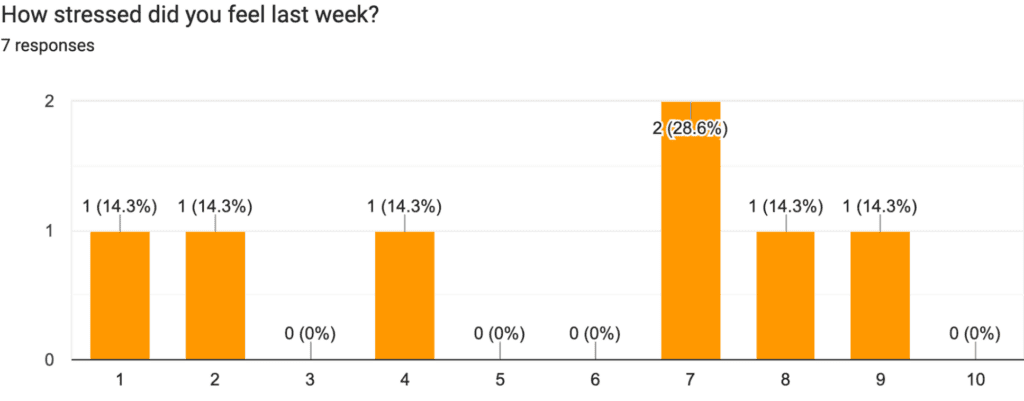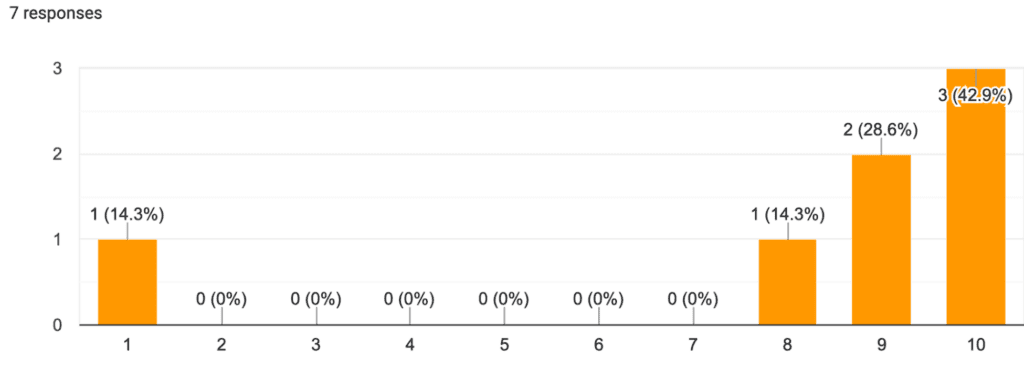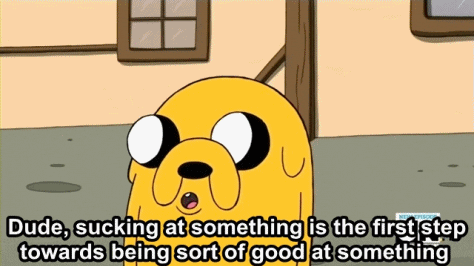This is part of our series on IWT’s 4-Day Workweek Challenge, where we take you behind the scenes to show what it’s like for us as we test out a compressed work schedule. The email you’re about to read is written by Tony Ho Tran, a professional journalist for The Daily Beast and a former copywriter for IWT. Join us as we dive deep on the highs and lows of the challenge.
For the past few weeks now, we’ve been talking about all the good things about a 4-day workweek (4DWW) — and it’s not hard to see why:
- More time to spend with family
- More time for travel
- Less stress at work
- Greater productivity and efficiency
…just to name a few.
This week, we’re a little more than halfway through the 4DWW Challenge. That’s why we thought it’d be a good point to check in on how things are going — straight from the IWT employees themselves.
This is going to be a brutally honest look at 4DWW. We’re not going to sugarcoat things and tell you that everything is going 100% great when it isn’t. It’s an entirely new paradigm of working. That means it’s going to require big mental shifts — and yes — even some growing pains.
Survey says…
As part of the 4DWW test, each IWT employee fills out a check-in survey each week so the team can assess how things are going.
Think of it like weighing yourself if you were trying to lose or gain some pounds. You want to know if you’re on track — and if you aren’t, it’ll give you an opportunity to fix it.
The survey itself asks employees to rate these questions on a scale of 1 to 10:
- How much control did you feel you had over your work last week?
- How rested did you feel last week?
- How stressed did you feel last week?
- How effectively did we work as a team last week?
- Overall, how do you rate the 4-Day Workweek test so far?
Finally, there’s an answer box where they can voice any and all opinions, concerns, and questions they might have.
Once they’re filled out, all of the average answers for each question are compiled into Google Sheets, where it gives a broad snapshot of where things stand.
Here’s what it looks like so far:

For a large part of it, things look pretty good halfway through. Everyone is relatively well-rested (though things have gotten a little hectic in recent weeks as you can see). Things have also been mostly low-stress, and 4DWW still continues to gain high marks.
But average numbers only tell part of the story. Digging into it a bit more, we find a much more complex and nuanced picture of 4DWW than we could have ever imagined.
Grab a shovel. We’re going to unearth some insights — and it might get messy.
Here are 7 big lessons from the past 7 weeks of 4DWW.
Lesson #1: It’s not 100% stress-free
The first two weeks of the 4DWW Challenge were predictably stressful — but people got a lot more relaxed during June.
But then, something happened: The quarter started ending. Anyone who has ever had to work in a business environment knows that’s the time that deadlines and goals need to be met — which means MUCH more stress for everyone and less time to do it because of 4DWW.
“Last week was extra stressful because we were trying to do too much for one week,” one employee wrote (the survey is anonymous). “It would have been too much even if we weren’t doing a 4-day workweek.”
“I have maintained a positive outlook regarding the implementation of a 4-day workweek, anticipating improvements,” another employee wrote. “However, I regret to note that the situation has been deteriorating instead.”
As a result, we started to see the first truly low scores (ones and twos) when it came to people’s stress levels.

However, the week was also stressful due to the July 4th holiday falling on a Tuesday (more on that later). As such, we saw a nice bounce back the following week.

Despite the deadlines and hectic holidays, the team at large is able to come together and help each other out when needed.
“I’m starting to feel the stress, but I went to my team and we problem-solved together,” an employee said. “I think it’s a great opportunity for all of us to work together to streamline our processes and hand-offs.”
Lesson #2: Holidays are weird
No, we’re not talking about your weird aunts and uncles who have strong opinions about politics at the Thanksgiving dinner table.
The way holidays work for the 4DWW Challenge is that they replace the day that an employee would typically have for their day off. For example, since July 4th fell on a Tuesday this year, everyone took that day off instead of either Monday or Friday.
When this happens, it requires a lot more shuffling of people’s schedules — which could prove to be incredibly disruptive to workflow, not to mention sucking the wind out of what would normally be a day people looked forward to.
“This week was weird with the holiday being on a Tuesday,” one employee wrote. “It was very disjointed and felt like I had two Mondays. Not a fan of the mid-week holiday, it seemed to add more stress than anything and I honestly didn’t feel like I had a holiday at all.”
“I think the holiday with its [out of offices] made things trickier than usual,” another wrote. “When a task involves multiple handoffs, it becomes really tricky. This was an issue around holidays before 4DWW, but it just added one more day to juggle around.”
Lesson #3: 4DWW is a powerful motivator
4DWW remains an incredibly potent motivator even 7 weeks in. Not only is it helping employees stay on track with their tasks and projects each day, but it’s also infusing a sense of pride into some people’s work that they haven’t necessarily felt before.
“The 4-day workweek makes me feel valuable. Not just another ass in a seat doing work, but someone who is made to feel like their rest and stress level is important to the company,” one employee said. “That’s a company I want to work for, and it makes me do even MORE of my best when I’m working.”
“It’s a motivator to get stuff done, so you’re not thinking about it on the weekend,” another employee added.
This is a common refrain. Even when there is a lot of work, the company wants to work together to make sure it’s done so everyone can enjoy their day off.
Lesson #4: Time can easily run out

While things have been great the majority of the time, some employees occasionally find themselves with their backs against the wall. Part of the growing pains is learning how to prioritize the work they used to get done in 5 days down to just 4.
Still, this doesn’t mean that it was a deal breaker or everything is going to hell in a handbasket. Instead, it means that people have to work at becoming more efficient week to week.
“I ran out of time to get some things done by Friday, but that might be more a me and my summer home life issue,” one employee wrote. “I still like the day off during the week to get things done and then I’m able to do more fun things on the weekend.”
Lesson #5: Work needs to be laser focused
When employees are sitting down to work, there is a higher sense of urgency in what they do. That means really dialing in their focus on exactly what needs to get done — while ignoring everything else.
“Honestly, I feel more productive during the work days, as I’m becoming aware of small things that were taking time away from more important things,” an employee wrote. “I’m either streamlining how I work or simply removing distractions. I’m loving the compressed workweek.”
“I made some pretty big strides mentally this past week,” another added. “I believe the 4DWW is putting me in a better place stress-wise (both in and out of work). I feel like it’s boosting my ability to focus on the important things and is teaching me to relax a bit more on the lower priority tasks.”
TIP: Sometimes we all need help tearing down the mental blocks that get in the way of great focus. That’s why Ramit created Finisher’s Formula to help you remake your psychological systems and regain focus.
Lesson #6: Meetings need to be concise — or removed from the calendar entirely

Listen, we get it. Sometimes you need to hop in a Zoom room to hash something out with your team.
But the fact is the VAST majority of meetings are completely unnecessary, and yes, most could just be emails or Slack messages.
This is especially the case when it comes to 4DWW when people’s time becomes even more valuable. On days when there are MULTIPLE meetings, it becomes even more difficult to finish projects and tasks on time.
“One day was extremely meeting-heavy. Some of the meetings required a Zoom meeting, but other meetings could’ve been handled async,” one person wrote.
Another added, “Weeks with lots of meetings are the one thing that seems to cause stress, as it greatly reduces the amount of time I have to get everything done.”
When meetings do happen, they need to be concise and efficient to make the most of everyone’s time. Luckily, that’s not really a problem at IWT.
“The meetings I had to attend were all straight to the point, effective, and smooth,” one person said. “They also ended early if everything had been discussed and a plan of action was made.”
Lesson #7: Patience is a virtue
One thing that we’re learning about the 4DWW Challenge is that it’s really a skill. When you’re first picking up a new skill like learning a new language or instrument, you’re going to suck at it. Plain and simple.
But with time, consistency, and a WHOLE lot of patience, you’ll get better and better at it — as we’re just learning now at IWT with the 4DWW Challenge.

“It’s getting better,” one employee wrote. “It feels like the dust is clearing from the start of the experiment, and we’re seeing clearly where changes are necessary to make it work.”
* * *
With the halfway point crossed, we still have the rest of the summer to go. That means another few weeks of hard-won lessons and well-deserved days off for the IWT team.
